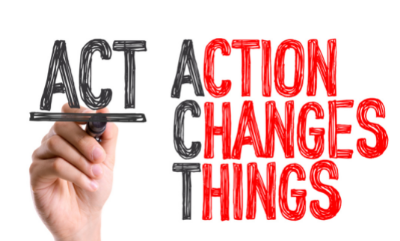This ground-breaking national Report has just been released by the Australian Government.
This seminal project makes 10 recommendations for Australia’s future. It was developed through investigation of international leading nations’ circular economy strategies, levers and incentives, and in consultation with Australian industry and government leaders. This report commissioned by the Australian Government is the partnership output of RMIT University, Arcadis and me as Director One Planet Consulting. It contains useful chapters summarising action plans for priority sectors of Plastics, Textiles, Electronic Goods and Buildings.

L-R: RMIT’s Allister Hill, Associate Professor Simon Lockrey and Dr Liam Fennessy with Helen Millicer from One Planet Consulting. Credit: RMIT University
Our view is that Australian governments, industry groups, businesses and education/training institutions need to align with the 10 recommendations if Australia is to improve its sustainability, productivity and competitiveness. In this report we outline why, how and who.
You can access the reports via the DCCEEW website and the RMIT website.
Watch the video via this link on the DCCEEW website.
There is an online launch of the reports on Friday, 24 March (commencing 10 am AEDT), where we will summarise the research insights and all interested parties need to register to attend the webinar.
Elements I anticipate that will be of interest and value are as follows:
- 10 recommendations for improved product made and sold into the Australian market
- Chapters specifically on 4 priority sectors: electronic goods, textiles, building and plastics
- New model framework to mainstream improvements moving from voluntary measures to mandatory measures incl laws, regs, financial re-structures, procurement measures and certifications
- Revision of the Ellen MacArthur Circular Economy diagram to better articulate product and material flow, roles, actions and responsibilities for the urgent transitions required.
Report recommendations
The Reports’ recommendations highlight ten cross-cutting levers and targets four priority sectors for Australia to improve the sustainability of production processes, materials, products and business models across local industries, as well as the risks of not doing so.
The ten (10) cross-cutting levers are:
1 – Adopting national Eco-Design for a Circular Australia Strategy
2 – Revise and energise product stewardship and extended producer responsibility
3 – Activate design for reuse, repair and refurbishment – the Reuse & Repair Reset program
4 – Raise standards and specifications for products and materials for systematic national alignment with global best practice
5 – National funding for Eco-Design and circular initiatives/ supply chain innovation – The Eco-Design Innovation Fund
6 – Accelerating Recyclables from Landfill Fees on priority products
7 – Mechanisms addressing externalities
8 – Procurement power and market pull – the Buy for Good program
9 – Professional education program to activate skills and capacity for environmental good – the Learning for Environmental Good and Upskilling Program
10 – Accelerate public acceptance and support of design for environmental good
The four (4) target sectors are:
- Textiles(products comprised mainly of textiles – covering fashion and industrial uses)
- Buildings(physical products, materials in buildings. Not operating energy, water)
- Plastics(for plastic packaging and plastic products used in buildings, textiles, automotive)
- Electronic goods(goods that have a battery or a plug – i.e. rely on electric currents or electromagnetic fields to operate)








